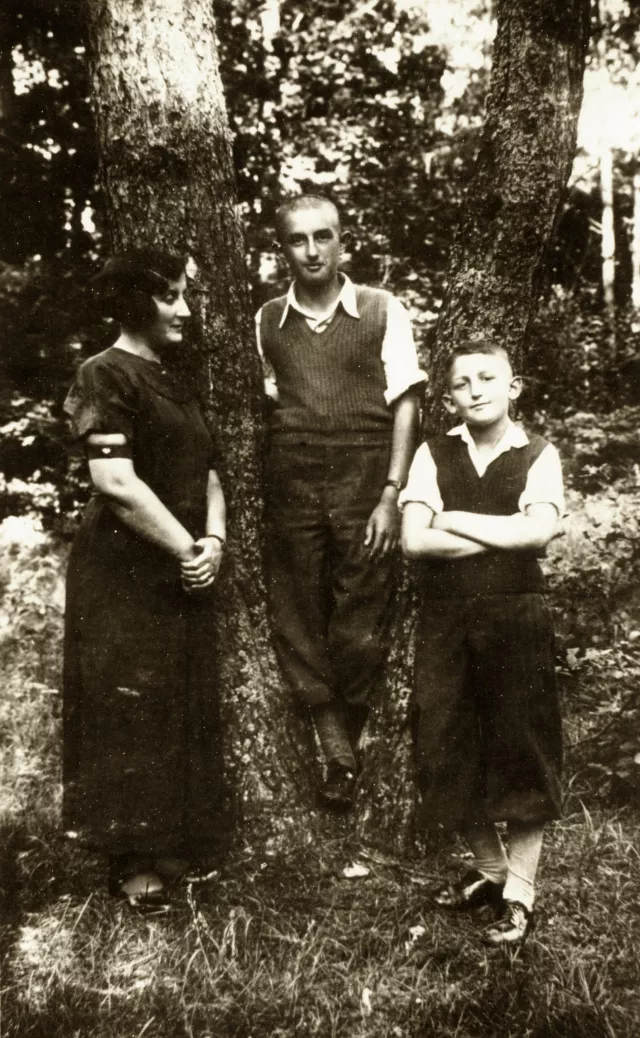Zalman Kaplanas with his parents Etl and Moshe Kaplan
On this photo you can see my mother, Etl Kaplan, on the left, in the center my father, Moshe Kaplan, and me on the right. The picture was taken in Jurbarkas during a stroll, some time in the 1930s.
My mother was born in 1900 and became motherless at the age of six. Her elder sisters finished lyceum in Kaunas. My mother, who lived with her father, had to go to the Jewish school. In 1915 she finished school and Grandpa was exiled to Siberia. There was no way she could go on with her studies. Mother did house chores and helped her brothers Joseph and Emmanuel, who didn’t have their own families yet and worked to support their sisters. In 1919 when Grandfather Morduchai came back, my mother fell in love with my future father.
My father was born in 1893. He was even less educated than my mother. He merely finished cheder. Father was on odd jobs before he married my mother. He was willing to do any job. My parents fell in love with each other. Grandpa Morduchai was categorically against their marriage. He thought it to be humiliating for my mother to be married to a poor man. Then Moshe and Etl crossed the river in a boat and settled in a neighboring hamlet. They had made preliminary arrangements with the rabbi who made a chuppah for my parents. When Mother’s brothers found out about the runaways, they took the boats to chase them, but they were a couple of hours late. It was too late, the rabbi announced: ‘Amen’, so Etl and Moshe became husband and wife. First, Grandpa Morduchai didn’t recognize their marriage, and was hard on my parents. Mother was practically cut off the shilling. If she had made another choice, she would have relied on her father’s assistance.
After the wedding the newly-weds rented an apartment in Jurbarkas. It was the place where I was born on 28th May 1921 and spent my adolescence. My mother gave birth to my younger brother Mendel there in 1926. This old well-built wooden house is still there. Two stories of the house were residential and the third story was a garret. The house was adorned with a carving. The house was owned by a Jew, who leased the apartments. There were two large apartments on the first floor, and three smaller ones on the second floor. Our apartment, consisting of two small rooms, was on the second floor. The rooms were modestly furnished. There were a table and a beautiful, carved cupboard in the largest room, the so-called drawing-room. There was a large, carved bed with a laced cover in my parents’ bedroom. The smallest room was the children’s.
















